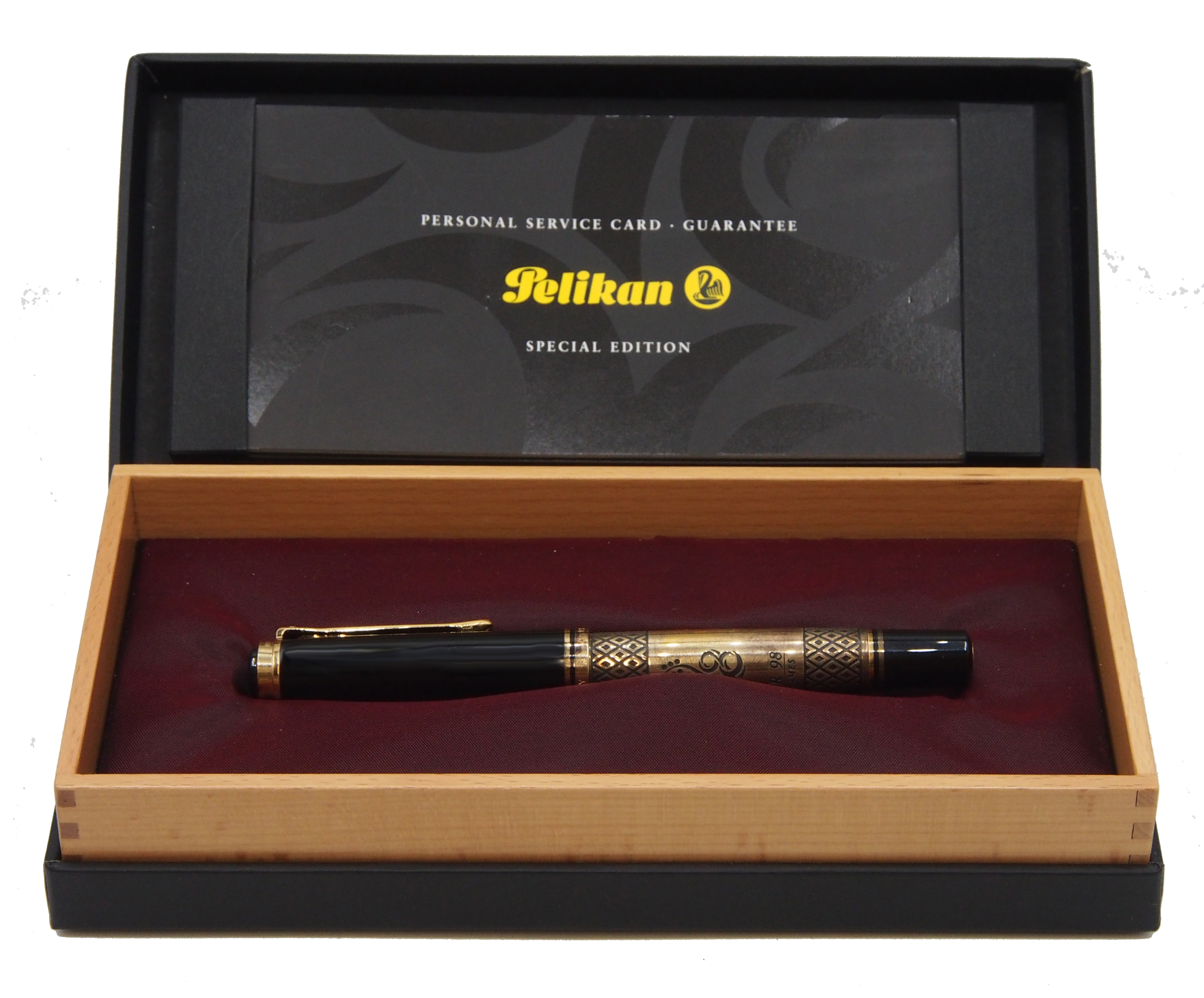

13/09/2025 General News
If I was to ask you to define the word ‘stylophile’, your first answer might be to suggest someone who is interested in fashion, writes Nigel Ducker. But in fact, the word indicates someone whose passion is for something which could be said to be rapidly falling out of fashion: writing instruments, and in particular fountain pens.
In an age when most of our writing is done at a keyboard (or with our thumbs on a smartphone), you might think that the age of the fountain pen is over. And yet, as we see regularly in the saleroom, there are still plenty of collectors around who share a love for these most elegant of writing tools.
For the collector, a beautiful fountain pen is more than something with which to write. Much as with luxury wristwatches or cars, they appeal on a number of levels: aesthetics, nostalgia, design, quality and cachet all play a part.
Like wristwatches, they are also intimate, personal objects, which still fulfil a function, even if arguably that function can be achieved more effectively and more conveniently using modern technology. The most expensive fountain pen ever sold at auction was a Fulgor Nocturnus by Tiabldi, which sold for a staggering £5.9 million – but collecting pens can be accessible at pretty much every budget level.
After centuries of writing with a feather quill which was repeatedly dipped in an inkwell, fountain pens started to appear in the 17th century – Samuel Pepys mentions in his diary a business associate called Mr Coventry who had a ‘silver pen that carried its own supply of ink’.
Early fountain pens were unreliable and prone to leaking, and it wasn’t until the 1880s that a New York-based insurance broker, Lewis Waterman, following a disastrous contract signing when his own pen didn’t work and someone else sealed the deal while he was searching for a replacement, started experimenting with new designs to ensure constant a much smoother ink flow.
The post war years saw the heyday of the fountain pen, before it was usurped in the 1980s first by the ubiquitous and convenient ball-point and then by the rollerball. Today a fountain pen is regarded as a luxury, to be used for special occasions – important personal letters, greetings cards and signing certificates.
So what are collectors looking for? First of all are the big names: Montblanc, Pelikan, Waterman, Conway Stewart, Pilot and Faber Castell to name but a few.
Vintage pens (i.e. pre around 1965), especially limited editions and those made in smaller numbers, remain very collectable, and those with gold nibs – either 9ct or 18ct - are regarded as an indicator or quality.
Many collectors are of a certain age; they are likely to have grown up in the heyday of the fountain pen and are now buying those pens which they aspired to when they were younger, but which they couldn’t afford at that point in their lives – this is a phenomenon we see in many areas of collecting.
Keys Silver, Watches and Collectables Sale on Wednesday 24th September has a wonderful selection of pens from a single collection, with 25 lots going under the hammer. Included are two limited edition fountain pens by German manufacturer Pelikan, a Harley Davidson-branded pen, and a 1960s vintage 9ct gold pen by English maker Yard-O-Led.
Despite the fact we live in a digital world, fountain pens remain very collectable, and there is a lively market for them. Which of us doesn’t still get a thrill from receiving a handwritten letter which someone has lovingly crafted with a proper pen?